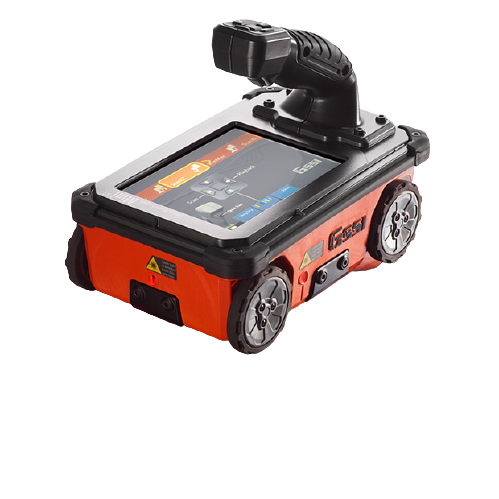Check Out RainierGPR Service Areas for Expert Concrete Scanning
Check Out RainierGPR Service Areas for Expert Concrete Scanning
Blog Article
Enhancing Task Planning and Execution Via Advanced Concrete Scanning Techniques
In the realm of project preparation and implementation, accuracy and insight are essential elements that can make the difference between success and setbacks. Advanced concrete scanning techniques have arised as an innovative device established to raise the standards of project administration within the building and construction industry. By taking advantage of advanced innovation, these techniques provide a look right into the architectural honesty of a structure even prior to the very first brick is laid. The implications of such developments are extensive, promising a standard shift in just how tasks are come close to and provided.
Benefits of Advanced Concrete Scanning Strategies

Improved Accuracy in Project Analyses
Enhancing task analyses via sophisticated concrete scanning methods significantly boosts the accuracy and reliability of building and construction examinations. By utilizing innovative scanning technologies such as ground-penetrating radar (GPR) and 3D imaging, project teams can now get comprehensive understandings into the condition of concrete frameworks, identifying potential defects or weaknesses that may not be noticeable to the naked eye. This boosted level of accuracy in project assessments allows construction experts to make more enlightened choices concerning repair and upkeep approaches, bring about improved overall project outcomes.
In addition, the increased precision in task analyses attained through sophisticated concrete scanning strategies helps in reducing the danger of unpredicted problems throughout the construction phase. By proactively identifying concealed anomalies within concrete frameworks, such as rebar corrosion or voids, project groups can attend to these issues early on, staying clear of costly delays and remodel later in the task lifecycle. Ultimately, the enhanced accuracy in task assessments assisted in by advanced concrete scanning methods adds to greater effectiveness, cost-effectiveness, and top quality in building tasks.
Very Early Identification of Architectural Difficulties
Very early detection of structural difficulties plays an essential function in ensuring the honesty and security click this site of concrete frameworks throughout the construction process. Identifying possible problems at an early stage permits for timely treatment, protecting against pricey rework, timetable delays, and security threats. Advanced concrete scanning techniques, such as ground-penetrating radar (GPR) and 3D imaging, make it possible for job groups to uncover covert issues, voids, reinforcement design inconsistencies, and various other abnormalities that can jeopardize the structure's stability.
By implementing these strategies throughout the preparation and execution phases, building and construction experts can proactively deal with structural difficulties prior to they rise right into significant issues. As an example, identifying inadequate concrete cover over support bars beforehand can avoid corrosion and structural weakening in the lengthy run - RainierGPR Service Areas. In addition, recognizing variants in concrete thickness or density can aid optimize material usage and guarantee uniform strength homes throughout the framework
Eventually, early recognition of architectural obstacles with sophisticated concrete scanning not only improves the general quality and toughness of the construction however additionally adds to a more secure browse this site developed environment for owners and customers.
Enhanced Safety Measures in Construction
The application of robust security procedures is imperative in the building industry to minimize threats and secure the health of employees and stakeholders. To enhance security measures, building firms are increasingly adopting technological improvements such as wearable tools that check employees' crucial indications and find possible health problems in real-time. By focusing on safety and security through the consolidation of sophisticated innovations and extensive training programs, building and construction tasks can dramatically reduce crashes and create a secure working environment for all included.
Streamlining Task Administration Processes
To maximize functional performance and ensure task success in the construction sector, a focus on simplifying task management processes is essential. By implementing efficient job administration procedures, construction jobs can reduce delays, minimize expenses, and boost total performance.

Final Thought
In final thought, the application of sophisticated concrete scanning techniques supplies numerous advantages for task planning and implementation. These strategies offer better accuracy in project assessments, very early identification of structural obstacles, improved security steps in building and construction, and structured job administration procedures. Incorporating these approaches right into job operations can inevitably result in much more successful and efficient end results in building tasks.
Eventually, the boosted precision in job analyses facilitated by innovative concrete scanning techniques contributes to higher performance, cost-effectiveness, and top quality in building jobs. RainierGPR Service Areas.
To enhance operational efficiency and guarantee project success in the building and construction industry, an emphasis on improving project management processes is crucial. By executing efficient task monitoring procedures, building tasks can decrease delays, reduce costs, and boost general efficiency. By simplifying job monitoring procedures through modern technology combination, clear communication, and data-driven techniques, building jobs can achieve higher performance, cost-effectiveness, and effective results.
These methods provide improved accuracy in task assessments, early recognition of architectural obstacles, enhanced security procedures in construction, and structured task management processes.
Report this page